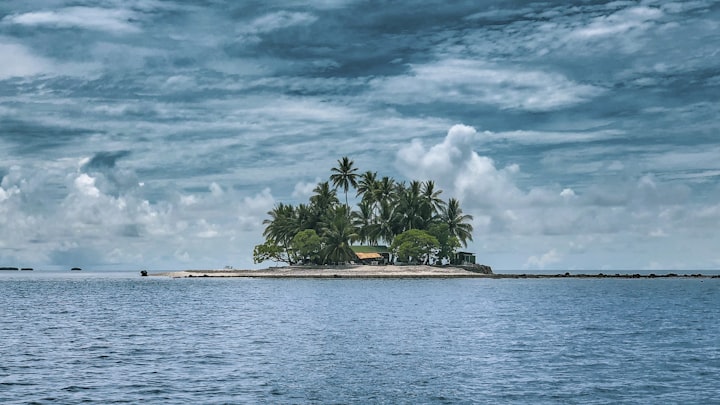EDIBLE ISLAND
You can literally eat this Island

There is a group of Peruvian islands in Lake Titicaca, known as the Uros Islands, that cannot be easily tracked by coordinates. These unique floating islands occupy a corner of Lake Titicaca, which is considered the world's most navigable lake. What makes these islands fascinating is that they are entirely man-made.
The Uros Islands are constructed by layering totora reeds, which are water-resistant and versatile. The totora plant is used for making boats, roofs, mattresses, and more. Additionally, the plants that form the islands are edible, and their flowers can be used to make tea. However, there is a downside to these islands. The reeds composing the islets rot every 15 to 20 days, requiring constant replacement. It is an endless cycle of work and repair.
Due to their nature, the Uros Islands are more like boats than traditional islands. Moreover, the waters of Lake Titicaca can be quite turbulent, making it necessary for the locals to anchor the islands. They do this by driving eucalyptus rods into the bottom of the lake, serving as anchors to prevent the islands from constantly drifting away.
Despite their small size, there are two languages spoken among the inhabitants of these islands. Unfortunately, neither of these languages is one that I can speak, hence the need for subtitles. The people living on these islands are quite self-sufficient and can weave their own fabric, creating stunning outfits from their creations. The islands have also embraced modern amenities, including solar panels for light, TVs, and even a radio station on the main island. Furthermore, the locals rent lodges to tourists, and booking accommodations can be done online.
Throughout history, people have sought the secrets of longevity, and it turns out there is a geographic area famous for its inhabitants who live exceptionally long lives. One such place is Okinawa, which is often referred to as the "Hawaii of Japan." It is important to differentiate between the Okinawa prefecture, consisting of more than 160 islands, and the main island of Okinawa.
Okinawa offers perfect weather conditions, even in its colder months, with temperatures reaching up to 68 degrees Fahrenheit. The ocean waters are inviting, and the cuisine is a melting pot of flavors, heavily influenced by Chinese delicacies and featuring local specialties such as soba noodles and sea grapes. The diet in Okinawa, rich in tofu, yam, and seaweed, is believed to contribute to the longevity of its inhabitants.
In addition to its appealing climate and cuisine, Okinawa boasts other interesting facts. It is the birthplace of karate and offers the opportunity to see the first cherry blossoms of the year, with petals appearing as early as mid-January. All these factors make Okinawa a desirable destination for visitors.
Now let's move on to a unique island called McGingo Island, which defies expectations with its density of inhabitants. With sources citing varying numbers, there are approximately 131 residents living on this half-acre island. McGingo Island is located in Lake Victoria, situated between Kenya and Uganda. Despite its small size, it is home to numerous buildings, predominantly with metal-tiled roofs, giving the island the appearance of a giant metal turtle floating on the water.
The island lacks vegetation, with most of its surface covered in rocks. However, there is a small area with green grass and a few shrubs. Fishing is a major source of livelihood for the inhabitants, and the island's waters offer plentiful catches, particularly fresh perches. Though there are no hospitals or schools, businesses have emerged to cater to the needs of the population, and money circulates on the island. The residents have adapted to this unique environment, creating a community that thrives on fishing and sustains itself with makeshift huts and various establishments, including a 12-room hotel and tailor shops.
While McGingo Island may be one of the most densely populated islands, it is not the tiniest inhabited island on the planet. That distinction belongs to Bishop Rock, part of the Isles of Scilly located 28 miles off Cornwall. In 1847, a 160-foot lighthouse was built on this rocky outpost, standing as the world's smallest island with a building on it. With ten floors and a variety of rooms, the lighthouse served as a home for its keepers until it was automated in 1992. Bishop Rock holds a unique place in history and is a testament to human engineering and resilience.
Lastly, let's visit what can be considered the cutest island, especially for cat lovers. Kashikojima Island, with its approximately 55 human residents, is home to over a hundred friendly feline inhabitants. These fluffy residents are known for their sweet temperament, as they have grown accustomed to being around people. The moment you step foot on Kashikojima Island, you will likely be greeted with affectionate rubs from the cats. The island even has a cat shrine, a rare sight to behold. Visitors should beware if they are allergic to cats.
Kashikojima Island showcases the harmonious coexistence between humans and their feline companions. The island offers a unique charm and the opportunity to witness the delightful interaction between residents and their beloved cats.





Comments
There are no comments for this story
Be the first to respond and start the conversation.